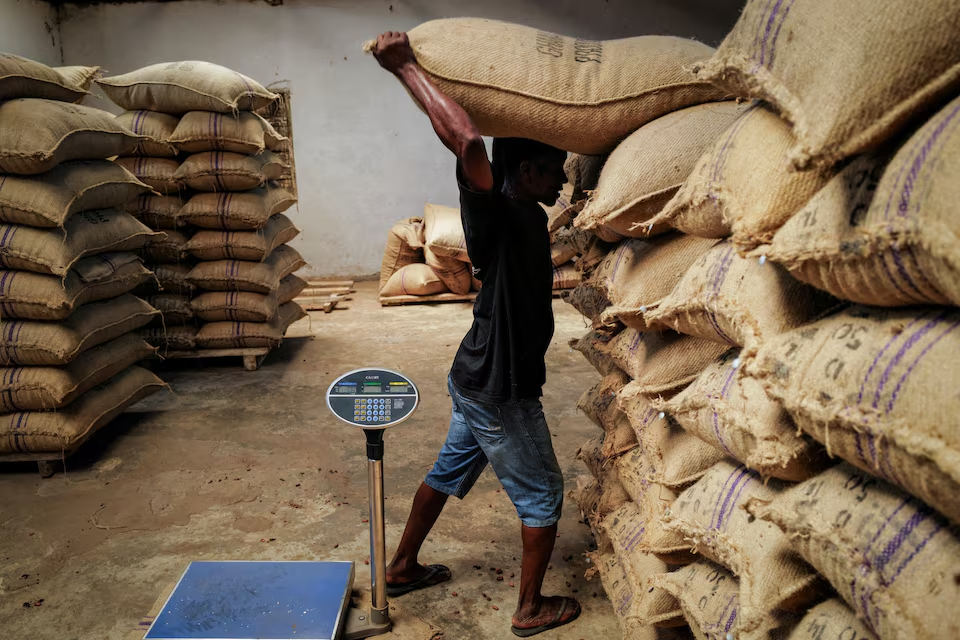Ghana cocoa production reached 429,323 metric tons – or less than 55% of the average seasonal output – as harvesting neared completion at the end of June, data from marketing board Cocobod showed on Tuesday.
Disastrous harvests in Ghana and Ivory Coast – the world’s biggest producer – have driven up global cocoa prices since the start of the year. Together, the countries account for around 60% of global supply.
The bulk of Ghana’s cocoa harvest is usually completed by the end of June, and the Cocobod data roughly reflects this season’s main crop output for the world’s second largest producer.
Both of the leading producers have been hit by adverse weather conditions and tree disease, while Ghana’s cocoa production has also been hobbled the impacts of informal mining and smuggling.
The Cocobod data obtained by Reuters does not capture production that may have been trafficked out of the country illegally.
On June 21, Cocobod announced the start of Ghana’s light crop – the smaller of its two annual harvests – which typically contributes less than 10% of the full season’s production.
Ghana’s annual cocoa output averaged 800,000 tons over the last five seasons, according to International Cocoa Organization data, including a 2020/21 peak of over 1 million tons. But the Cocobod data reflects three successive seasons of decline.
One could argue that clean energy funds have done a very good job of cleaning out investors’ pockets.
The marketing board declined to provide equivalent production data through June of the two previous seasons. Full season output, however, was 683,269 tons in 2021/22 and 656,140 tons the last season.
Ghana’s two leading cocoa growing regions – Ashanti and Western South – have been the biggest contributors to the overall drop in production, the data showed.
Ashanti produced 103,976 tons of beans by the end of June, compared to a full season figure of 160,855 tons last season. Western South, meanwhile, recorded production of 96,810 tons by end-June, compared to 152,277 tons last season.
Swollen shoot disease (CSSVD) and artisanal gold mining – known locally as galamsey – are largely responsible for the drop in production in the two regions, said Nana Kwesi Barning, coordinator of the Ghana Civil Society Cocoa Platform.
“Galamsey and CSSVD are massive in there, especially the galamsey, per our analysis,” he told Reuters.
Nana Johnson Mensah Kagya, a major farmer in the Western South region with around 80 hectares of plantations, said over half of his cocoa had to be cut down and replanted due to swollen shoot.
And illegal gold mining, he said, is drawing young men away from cocoa farming.
“If galamsey continues to exist, cocoa has no future. Because of the galamsey, you will not get anybody to work on the cocoa farm,” Kagya said.
The Western North and Western South regions along the border with Ivory Coast and the eastern Volta/Oti region next to Togo are all vulnerable to smuggling and their output has shrunk over the last three seasons.
Both Ghana and Ivory Coast sell forward their harvests. And this year’s giant production shortfall has meant Ghana’s Cocobod could not deliver enough cocoa to fulfil its contracts with exporters and traders.
Sources told Reuters last month that Ghana was looking to delay delivery of up to 350,000 tons of beans to the next season, though Cocobod denied the scale of the contract roll-overs.
Cocobod’s CEO has said he expects cocoa output to bounce back to over 800,000 tons in the next season due to open in October. Industry players and analysts, however, have said the target is too optimistic.
